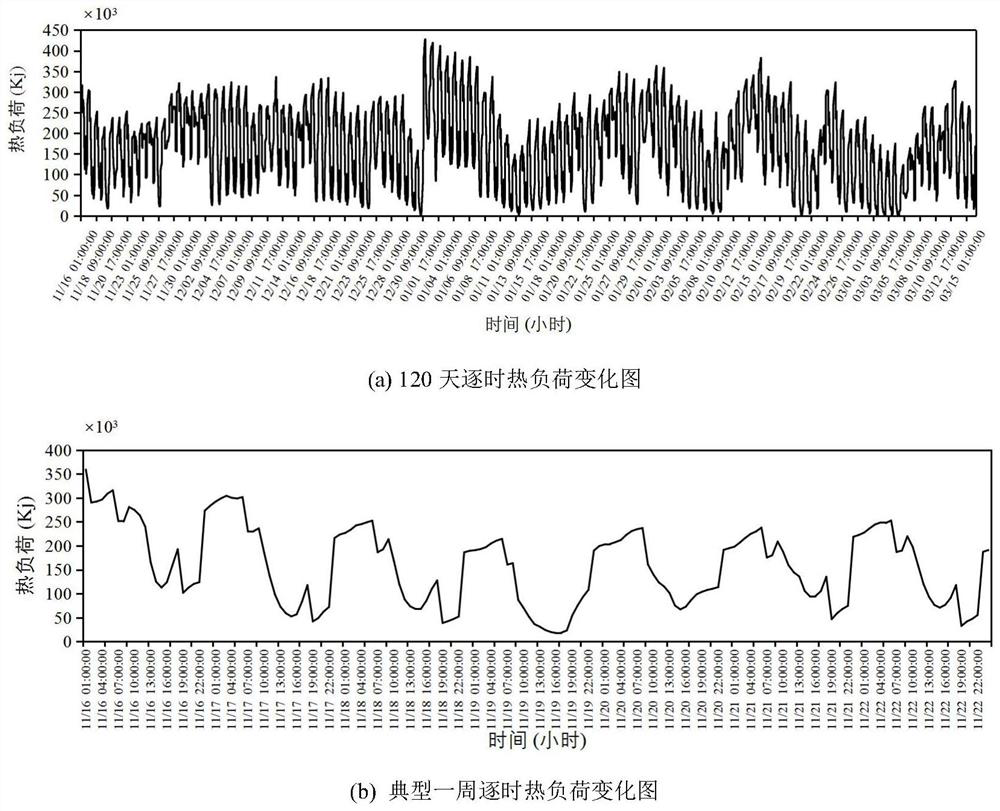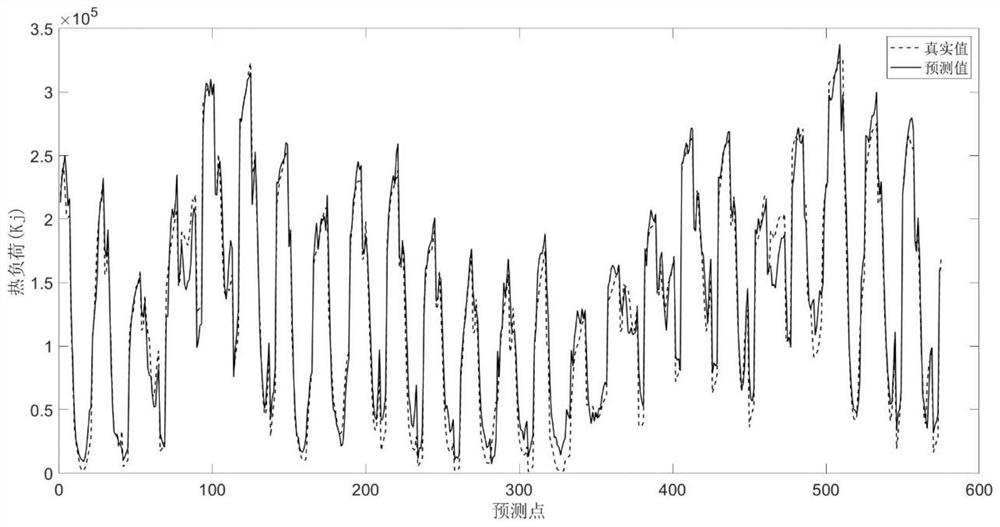Ultra-short-term thermal load prediction method for heat exchange station based on long-short-term time sequence network
A time series, load forecasting technology, applied in forecasting, neural learning methods, biological neural network models, etc., can solve problems such as easy loss of long-term information
- Summary
- Abstract
- Description
- Claims
- Application Information
AI Technical Summary
Problems solved by technology
Method used
Image
Examples
Embodiment Construction
[0023] The technical scheme of the present invention will be described in detail below in conjunction with the drawings and specific embodiments of the present invention, so as to make the technical features and advantages of the invention more obvious.
[0024] S1 Select as many relevant characteristic variable data as possible, which may include meteorological data, operating condition data and heat load data, etc., to construct a heat load data set, and obtain X n ={x 1 ,x 2 ,...,x n}, where n is the number of feature variables;
[0025] After S2 constructs the data set, it preprocesses the data:
[0026] S201 compensates the missing value, that is, the value whose data is 0 or empty, and uses the following formula to calculate:
[0027] x i =0.4x i-1 +0.4x i+1 +0.2x i+2 (1)
[0028] where x i is the current missing value, x i-1 、x i+1 and x i+2 Respectively, the values of the previous moment, the next moment, and the next second moment;
[0029] S202 For o...
PUM
 Login to View More
Login to View More Abstract
Description
Claims
Application Information
 Login to View More
Login to View More - R&D
- Intellectual Property
- Life Sciences
- Materials
- Tech Scout
- Unparalleled Data Quality
- Higher Quality Content
- 60% Fewer Hallucinations
Browse by: Latest US Patents, China's latest patents, Technical Efficacy Thesaurus, Application Domain, Technology Topic, Popular Technical Reports.
© 2025 PatSnap. All rights reserved.Legal|Privacy policy|Modern Slavery Act Transparency Statement|Sitemap|About US| Contact US: help@patsnap.com



